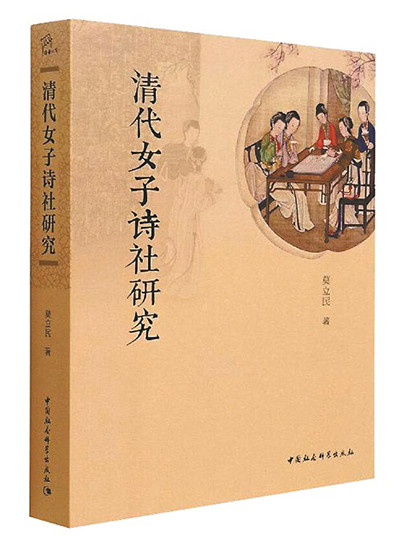Women’s poetry society prospered in Qing Dynasty

A Study on Women’s Poetry Society in the Qing Dynasty
A Study on Women’s Poetry Society in the Qing Dynasty, written by Mo Limin, a professor from the College of Literature and Journalism at Xiangtan University, investigates the historical tradition and historical context of the rise of women’s poetry societies in the Qing Dynasty (1644–1911), as well as its evolution and organizational structure.
It gives a large chunk of focus to the poetic characteristics of three major female poetry clubs of the time, namely the Jiaoyuan Poetry Society, Qingxi Poetry Society, and Qiuhong Poetry Society.
At the same time, the book discusses some important women’s poetry societies rising in Jiangsu and Zhejiang provinces, and brings to light some circles which have been largely forgotten yet have their own characteristics. It also probes important or distinctive women’s poetry societies that arose in Fujian, Hunan, Jiangxi, and Sichuan provinces, among others, investigating several women’s poetry societies concealed in these areas.
Mo comments on the position of Qing women’s poetry societies in poetic history. He holds that women’s poetry societies were not only an important literary organization in Qing literary circles, but also an instrumental force of reform and opening in Qing society.
The author analyzes the main poetry literacy and quality of women’s poetry societies in the Qing Dynasty, mainly including regional and familial attributes; writings of maternal love and wifehood; the subdivision of writing themes; and the soft writing style. He expounds on the defects of poetry construction in the women’s poetry clubs at the time, such as unbalanced regional development, more conventional creations, less innovation, and the heavy conservative color.
There were a large number of women’s poetry clubs in the Qing Dynasty, more than the nearly 30 clubs mentioned in the book. Among the numerous women’s poetry societies in the Qing Dynasty, only a few major or important ones have been specially examined, including the Jiaoyuan Poetry Society, Qingxi Poetry Society, Qiuhong Poetry Society, Lady Qi Poetry Society in Shanyin (in the early Qing era), and Qujiangting Women’s Poetry Society in Yangzhou (in Qing’s heyday).
In this context, the author opens up neglected women’s poetry clubs in the Qing Dynasty and studies the process of club establishment, member composition, and poetry quality, thus enabling many historical facts and stories of women’s poetic circles in the Qing Dynasty to surface.
Wang Yongbo is a research fellow from the Institute of Literature at the Sichuan Academy of Social Sciences.
Edited by YANG LANLAN

 PRINT
PRINT CLOSE
CLOSE